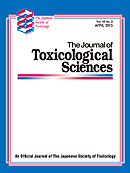
- |<
- <
- 1
- >
- >|
-
Yingjun Zhu, Min Zhang, Jiayu Wang, Qingxiu Wang2022 Volume 47 Issue 9 Pages 349-357
Published: 2022
Released on J-STAGE: September 01, 2022
JOURNAL FREE ACCESS FULL-TEXT HTMLEvidence has shown that suppression of the activation of NLRP3 inflammasome could ameliorate surgery/sevoflurane (SEV)-induced post-operative cognitive dysfunction (POCD). However, the underlying mechanisms remain unclear. UAF1 acts as a binding partner of USP1, which inhibits the ubiquitination-mediated degradation of NLRP3, indicating that UAF1 may be implicated in POCD through regulating the NLRP3 inflammasome. Here, we studied the role of UAF1/NLRP3 in SEV-induced cognitive impairment and neurotoxicity in rats. Neonatal rats were randomly divided into control, SEV, SEV+AAV-shNC and SEV+AAV-shUAF1 (UAF1-downregulated) groups. Morris water maze (MWM) test was applied to assess cognitive impairment. TUNEL staining, qRT-PCR and ELISA were used to assess the apoptosis and inflammation markers, respectively. The levels of superoxide dismutase (SOD), catalase (CAT) and malondialdehyde (MDA) were quantified to determine oxidative stress. The results showed that SEV treatment led to significant cognitive impairment, increased apoptosis in hippocampal tissues, upregulation of MDA and inflammatory factors (TNF-α, IL-1β, IL-18), as well as a decrease in SOD and CAT levels. All of the above observations were reversed by UAF1 downregulation. Furthermore, depletion of UAF1 neutralized SEV-mediated increase in p-NLRP3, p-IκBα and p-p65 levels. Altogether, the current study demonstrated that knockdown of UAF1 could alleviate SEV-induced cognitive impairment and neurotoxicity in rats by inhibiting pro-inflammatory signaling and oxidative stress.
View full abstractDownload PDF (3415K) Full view HTML
-
Tomomi Yoda, Tomoaki Tochitani, Toru Usui, Mami Kouchi, Hiroshi Inada, ...2022 Volume 47 Issue 9 Pages 359-373
Published: 2022
Released on J-STAGE: September 01, 2022
JOURNAL FREE ACCESS FULL-TEXT HTML
Supplementary materialHepatotoxicity is one of the most common toxicities observed in non-clinical safety studies of drug candidates, and it is important to understand the hepatotoxicity mechanism to assess the risk of drug-induced liver injury in humans. In this study, we investigated the mechanism of hepatotoxicity caused by 2-[2-Methyl-1-(oxan-4-yl)-1H-benzimidazol-5-yl]-1,3-benzoxazole (DSP-0640), a drug candidate that showed hepatotoxicity characterized by centrilobular hypertrophy and vacuolation of hepatocytes in a 4-week oral repeated-dose toxicity study in male rats. In the liver of rats treated with DSP-0640, the expression of aryl hydrocarbon receptor (AHR) target genes, including Cyp1a1, was upregulated. In in vitro reporter assays, however, DSP-0640 showed only minimal AHR-activating potency. Therefore, we investigated the possibility that DSP-0640 indirectly activated AHR by inhibiting the CYP1 enzyme-dependent clearance of endogenous AHR agonists. In in vitro assays, DSP-0640 showed inhibitory effects on both rat and human CYP1A1 and enhanced rat and human AHR-mediated reporter gene expression induced by 6-formylindolo[3,2-b]carbazole, a well-known endogenous AHR agonist. The possible involvement of CYP1A1 inhibition in AHR activation was also demonstrated with other hepatotoxic compounds tacrine and albendazole. These results suggest that CYP1A1 inhibition-mediated AHR activation is involved in the hepatotoxicity caused by DSP-0640 and that DSP-0640 might induce hepatotoxicity in humans as well. We propose that CYP1A1 inhibition-mediated AHR activation is a novel mechanism for drug-induced hepatotoxicity.
View full abstractDownload PDF (2176K) Full view HTML
-
Hiromu Sugawara, Hiroaki Norimoto, Zhiwen Zhou2022 Volume 47 Issue 9 Pages 375-380
Published: 2022
Released on J-STAGE: September 01, 2022
JOURNAL FREE ACCESS FULL-TEXT HTMLMethyl vinyl ketone (MVK) is an environmental hazardous substrate which is mainly present in cigarette smoke, industrial waste, and exhaust gas. Despite many chances to be exposed to MVK, the cellular toxicity of MVK is largely unknown. Neurons are the main component of the brain, which is one the most vital organs to human beings. Nevertheless, the influence of MVK to neurons has not been investigated. Here, we determined whether MVK treatment negatively affects neuronal survival and axonal morphogenesis using primary hippocampal neuronal cultures. We treated hippocampal neurons with 0.1 μM to 3.0 μM MVK and observed a concentration-dependent increase of neuronal death rate. We also demonstrated that the treatment with a low concentration of MVK 0.1 μM or 0.3 μM inhibited axonal branching specifically without affecting axon outgrowth. Our results suggest that MVK is highly toxic to neurons.
View full abstractDownload PDF (1846K) Full view HTML
-
Madoka Sawai, Yuu Miyauchi, Takumi Ishida, Shinji Takechi2022 Volume 47 Issue 9 Pages 381-387
Published: 2022
Released on J-STAGE: September 01, 2022
JOURNAL FREE ACCESS FULL-TEXT HTMLDihydropyrazines (DHPs), including 3-hydro-2,2,5,6-tetramethylpyrazine (DHP-3), are glycation products generated through non-enzymatic reactions in vivo and in food. They are recognized as compounds that are toxic to organisms as they produce radicals. However, our previous study indicated that DHP-3 suppressed Toll-like receptor 4 (TLR4) expression and decreased the phosphorylation of nuclear factor-κB (NF-κB) in lipopolysaccharide (LPS)-treated HepG2 cells. TLR4 signaling is involved in the onset of various inflammatory diseases, and NF-κB and mitogen-activated protein kinase (MAPK) play important roles in TLR4 signaling. Thus, we aimed to elucidate the effects of DHP-3 on MAPK signaling and in turn on the activated TLR4 signaling pathway. In LPS-stimulated HepG2 cells, DHP-3 reduced the phosphorylation of MAPK, extracellular signal-regulated kinase, c-Jun NH2-terminal kinase, and p38. The expression of c-jun, a subunit of activator protein-1, was decreased by DHP-3 treatment. Furthermore, DHP-3-induced suppression of MAPK signaling resulted in a decrease in various inflammatory regulators, such as interleukin-6, CC-chemokine ligand 2, and cyclooxygenase-2. These results suggest that DHP-3 exerts an inhibitory effect on TLR4-dependent inflammatory response by suppressing MAPK signaling.
View full abstractDownload PDF (1123K) Full view HTML
- |<
- <
- 1
- >
- >|